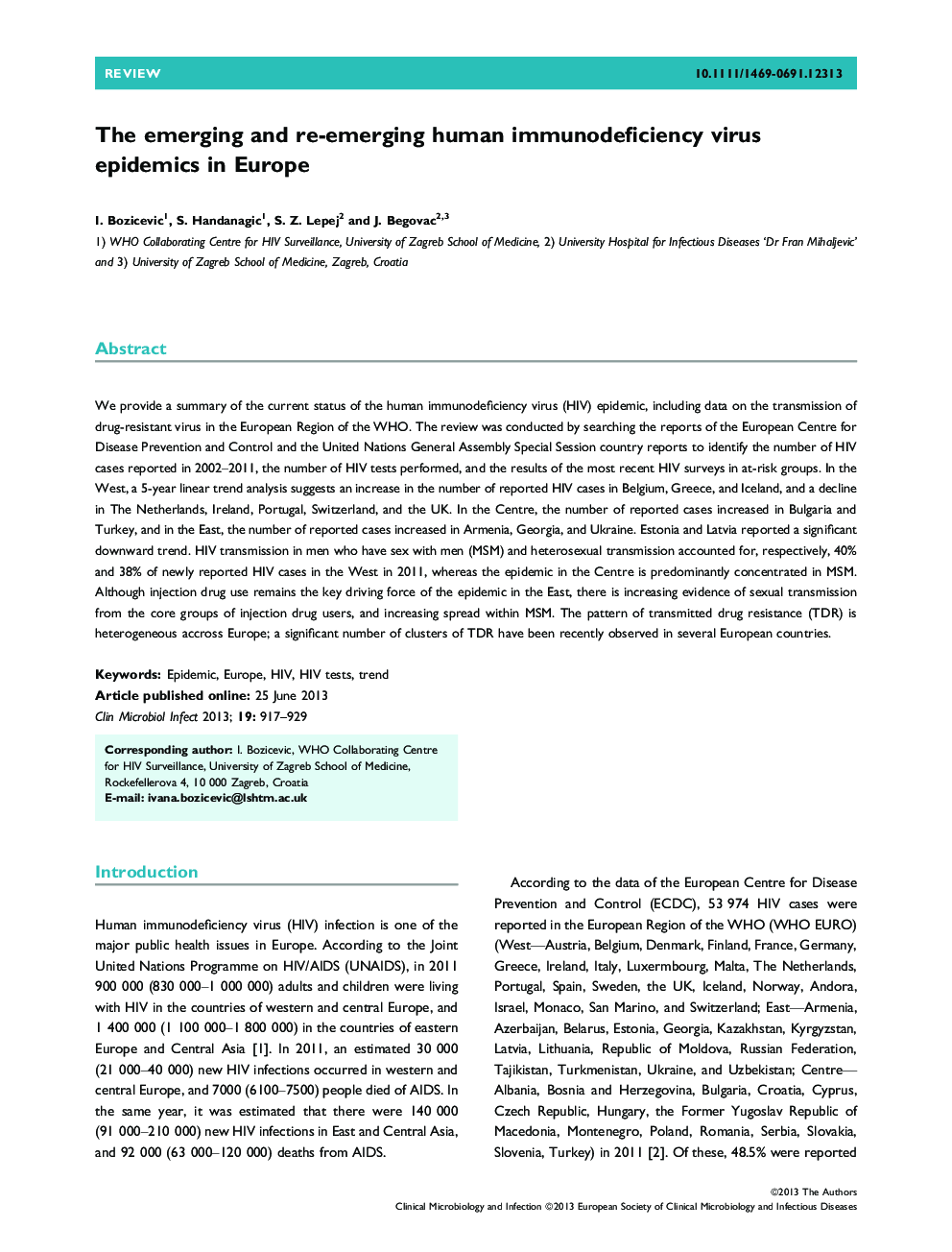| Article ID | Journal | Published Year | Pages | File Type |
|---|---|---|---|---|
| 6130640 | Clinical Microbiology and Infection | 2013 | 13 Pages |
Abstract
We provide a summary of the current status of the human immunodeficiency virus (HIV) epidemic, including data on the transmission of drug-resistant virus in the European Region of the WHO. The review was conducted by searching the reports of the European Centre for Disease Prevention and Control and the United Nations General Assembly Special Session country reports to identify the number of HIV cases reported in 2002-2011, the number of HIV tests performed, and the results of the most recent HIV surveys in at-risk groups. In the West, a 5-year linear trend analysis suggests an increase in the number of reported HIV cases in Belgium, Greece, and Iceland, and a decline in The Netherlands, Ireland, Portugal, Switzerland, and the UK. In the Centre, the number of reported cases increased in Bulgaria and Turkey, and in the East, the number of reported cases increased in Armenia, Georgia, and Ukraine. Estonia and Latvia reported a significant downward trend. HIV transmission in men who have sex with men (MSM) and heterosexual transmission accounted for, respectively, 40% and 38% of newly reported HIV cases in the West in 2011, whereas the epidemic in the Centre is predominantly concentrated in MSM. Although injection drug use remains the key driving force of the epidemic in the East, there is increasing evidence of sexual transmission from the core groups of injection drug users, and increasing spread within MSM. The pattern of transmitted drug resistance (TDR) is heterogeneous accross Europe; a significant number of clusters of TDR have been recently observed in several European countries.
Related Topics
Life Sciences
Immunology and Microbiology
Microbiology
Authors
I. Bozicevic, S. Handanagic, S.Z. Lepej, J. Begovac,
